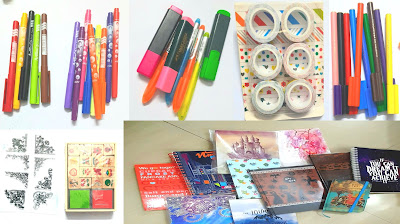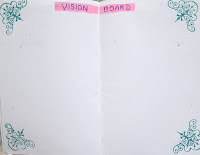TheRusticJournal.com is all about making your life easy through journaling. Let us understand what journaling is through this video:
One such journaling tool is Bullet Journal i.e. BuJo.
What is a Bullet Journal?
There are many definitions available. The one which I liked the most is:
" Analog Tool to Manage your Digital World"
Let me make things simple for you. A journal is basically a diary or notebook which we use to jot down stuff or to record something. And 'bullets' are usually symbols or something which are usually used to write important points. So, by combining these two definitions:
"A Bullet journal is a Record of some Important points of your Life."A Bullet Journal is your own personal diary which can be treated as a combination of several other types of journals, like art journal, planner, gratitude journal, doodle journal, fitness journal, and many more. I really love this thing about Bujo. I don't have to make a separate journal for any other thing. Just one Bujo to tackle all my issues.
You can make any notebook or diary your Bujo. It's the way you use it, that converts a normal journal into a Bullet journal. Now, the next question, that would be coming to your mind, might be-"what is this special way?". For understanding this special way, you should first understand few basic things which are written below.
Supplies needed for a Bullet Journal
Supplies include the stuff used to write (like pen or pencil), the stuff used to write on (like paper/notebook/dairy), and the stuff used to add extra embellishment (like colored pens, stamps, stickers, highlighters, markers, etc, which is not at all compulsory.
These embellishments may make this bullet journal look better, but they can also result in a decrease in its effectiveness. Sometimes I waste my whole time selecting which colored pen to use here or which sticker I should apply and where should I stick it. So clearing they are not meant for me to use. But if you are comfortable with it, then obviously you can add it to your supplies.
I prefer a notebook
- of A5 size ( so that it becomes easy to carry it anywhere and also it is not too small to use for daily purposes),
- with medium-thick paper (sometimes I like to use highlighters and markers, so to avoid spillage of ink to other paper)
- and with dotted pages ( Using scale every time to make any blocks or any trackers is something which I avoid. So these dotted pages help me in making an almost straight line and to put stuff in an organized manner).
Symbols used in a Bullet Journal
Here are a few lists of some common symbols used in Bujo:
- If you want to write a task then do so by starting with a dot:" . "
- When you have completed this task then just cancel that dot:" .X Task"
- If that task is no longer relevant then cross out it:".
Irrelevant Task" - If you were not able to do that task today and scheduled it for tomorrow:".>Task"
- If you want to schedule that task to some other day:".<Task" (also don't forget to add this task in the monthly log so that you don't miss that task. Since the monthly log is before the daily log so this backward symbol is used.)
These are just what some other people used. You can make your own symbols or add your own symbols. Just make sure that they don't take much time in making plus you easily remember them or else you can write them on the beginning pages of your Bujo so it becomes convenient to refer to in case you forgot. And yes, if you are not good at these symbols and all, then you can skip this. See this is the beauty of Bujo, you can customize it according to you and your needs.
The Qualities of a Bullet Journal
- Flexibility
- Compact
- Easy to use
- Fully customized
- Perfect Planner
- Perfect Tracker
- Totally Unbiased
- Perfect Companion
- Combination of many types of Journals
- and many more
The Drawbacks of a Bullet Journal
How to start a Bullet journal?
You can start in any way you want. Bujo is equivalent to full freedom. But I guess you will need some initial help. So here I am sharing with you my own way of converting a normal notebook to my own BuJo. Although this is how I start my yearly journal, you can modify it in your own way. Here are they in sequential steps:
- Name: It is just to give a personal touch. I usually write my name and my picture on the first page. If you want then you can give other details here or give a short introduction about yourself here. If you are good at calligraphy, then here is your chance to prove it. But for people having not a good handwriting like me, they can just write in the normal way and save this extra time and effort😁.
- Letter to Yourself: Do you believe in time travel? If not then this process will help you in believing in it. So here is the thing, on the second page, I write a letter to my future self ( usually to me who is one year ahead), and read the letter from my past self (usually to me who is one year back in past and who wrote this for my present self) and write the reply to it. This letter writing can be done to interact with yourself from past and future. The duration can be one year or 6 months or anything. It helped me a lot in watching the change that has occurred in this duration. I have seen how my goals, beliefs and other thing changes everywhere. It's really a good way of knowing yourself according to me. But it's optional. if you don't want then you can skip it.
- Goals: Then in this section, you can write all your yearly goals or things you want to achieve. This is for your long-term goals.
- Vision Board: This is my special addition to my BuJo. Vision boards are meant to manifest things by putting them regularly in your vision. But Sometimes there are kinds of stuff which you can not put in public or if you are living in hostels or any such place, there also it becomes difficult to place your board. So here is a solution. Use a full spread of notebook ( i.e. both left and right side of the page) and either draw or paste your vision board stuff there. To increase its effectiveness just spend at least a few seconds daily on it. Again, this is also optional. If you don't want then you can remove it.
- Index: This is the compulsory thing. Again use both left and right sides i.e one full spread for this Index. You can even make it to two spreads or more. Now, why it is so important? Because it will help you in finding the required stuff in less amount of time. It's my request to use this feature to the fullest. It is this tool that enhances BuJo to another level. Let's suppose I am filling my book log on page no. 30, and I have completed this whole page but on page no. 31, I have made a movie list. And the next available page is page no. 51. Then what I can do is that at the end of page no. 30, I will write "Go to page no. 51", and on page no. 51 I will write "From page no. 30". And in the Index, I will mention page no. 30 and page no. 51, both corresponding to the book log. Hence you can see how flexible our Bujo has now become. At this point, you must be wondering how tedious it would be to write the page numbers on each page. I agree with you. So what I do is I number pages when I use them. It's like writing on the go. So no pain of numbering all at a time
- Calendar: If you can draw the yearly calendar then good. Ese you can just take a printout from the internet and paste it. This is another small effort of avoiding distraction. If you need to see some dates or when is Sunday or anything else, then we usually switch to mobile phones, and you must be very well aware of how distracting these mobile phones and their notifications are. So we are using this Calendar section to make our BuJo self-sufficient and more effective.
- Monthly Log: Again take one full spread of page and divide it into 12 parts corresponding to 12 months of the year. You can use this for future plans like vacations, conferences or birthdays, or anything. You can add pieces of stuff later also. For example, if this month is June and the conference which was scheduled for June is shifted to October, then you can go back to this Monthly Log and change it accordingly. At the beginning of each month, you first have to come back here and check whether there is something scheduled here for that month or not.
- Collections: This is another special feature of a Bullet Journal. You can use BuJo to make a collection of anything like a doodle collection, book log, birthdays collection, inspirational quotes collections, collection of ideas for your project, and so on. Its place is not specific. On any page, you can start any collection. Just don't forget to mention it in the Index with its page number.
- Beginning of the First month: So finally our first month is Going to start. Obviously, we will write its name first and mention it with the page number in the index. If space allows you can make a monthly calendar and write monthly goals there or you can write them on the next pages. We will refer to the Month Log of Step 7. to check for scheduled tasks. It's like describing your expected monthly task in brief here. You can put monthly trackers on further pages to track anything like drinking water, reading books, workout duration, meditation duration, calorie intake, and so on. Many types of formats are available on the internet. I prefer tabular ones because they are easy to make and are easy to use. Similarly, there are many ways of making a monthly calendar. Choose the one which serves your purpose. I prefer making a monthly calendar by making a table of 7 columns (corresponding to each day of the week) and 5 columns. So that there is sufficient space in each tab for adding any task.
- Daily Log: Now this is the real game-changer. Here you will write all your task of the day and review them at a further time of that day. Since I believe in practicing Gratitude daily, so at the end of the day, I do that in this section. If you want then you can add doodles or anything you want here. Also, there is no need to put the daily section in the Index. It's worthless. But don't forget to number pages as you go so that you can add any collection or anything further. One common confusing thing about this is that should we devote one full page to each day or continue the second day below the first day on the same page or any other format. It all depends on you. I prefer to dedicate one full page to one day. This results in some space wastage but helps me in maintaining clarity which I prefer the most.
- Highlights of the Month: Now at the end of each month, I add this page which contains all the highlights of this month including my positive experience, some good moments, some lessons learned. It's basically reviewing my month. But here I have added one important thing. I write only positive and happy kinds of stuff. Negative and similar kinds of stuff are considered and are added to next month for improvement to prevent those kinds of stuff. I do this because, at any time of the year when I think I am in a bad phase of time, I just read these highlights from each month. Actually, I feel we have trained our brains to see and remember only the negative sides, and this highlight makes me remember that forgotten positive stuff. No matter how small it is. Just add to the highlights if it is positive.
- Next Month: Then for the next month, follow from step no. 9 to step no. 11 again.
My Special way of using a Bullet Journal
You can also read:
- Ready to Bust some Bullet Journal Myths??
- How to Overcome Negative Thoughts??
- 54321 Technique to deal with Anxiety
- Deal with PROCRASTINATION
- Importance of Goal in Life
- How Future Anxieties aren't as Bad as You Think
- 6 minutes Yoga Workout for Stress-Free Living
- 5 Useful Tips for Time Management
- Weight Loss Rewards !!
- The Other Way of Practicing Mindfulness
- Why Everyone is so Obsessed with Honey??












No comments:
Post a Comment